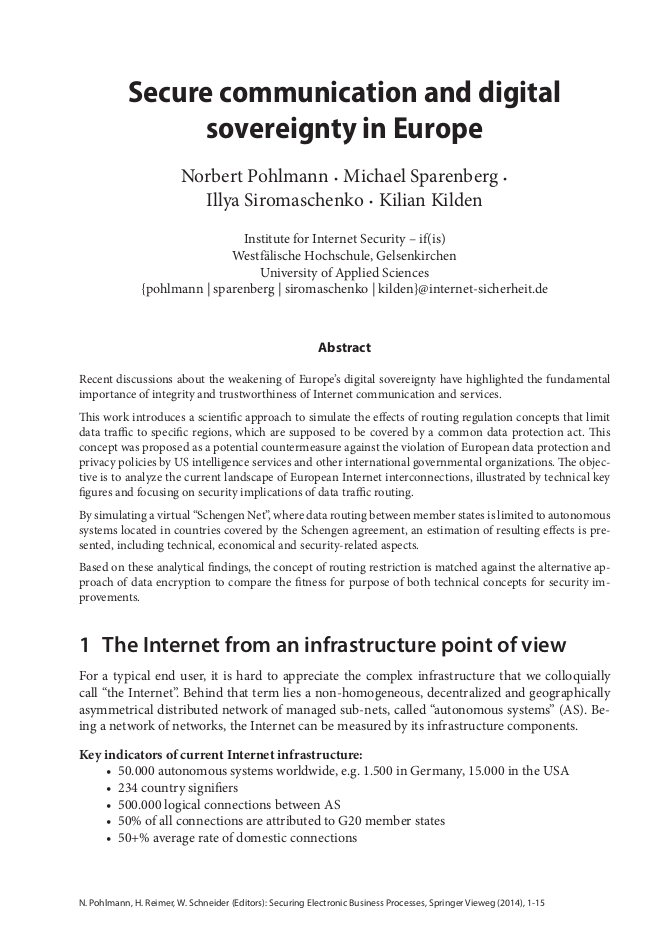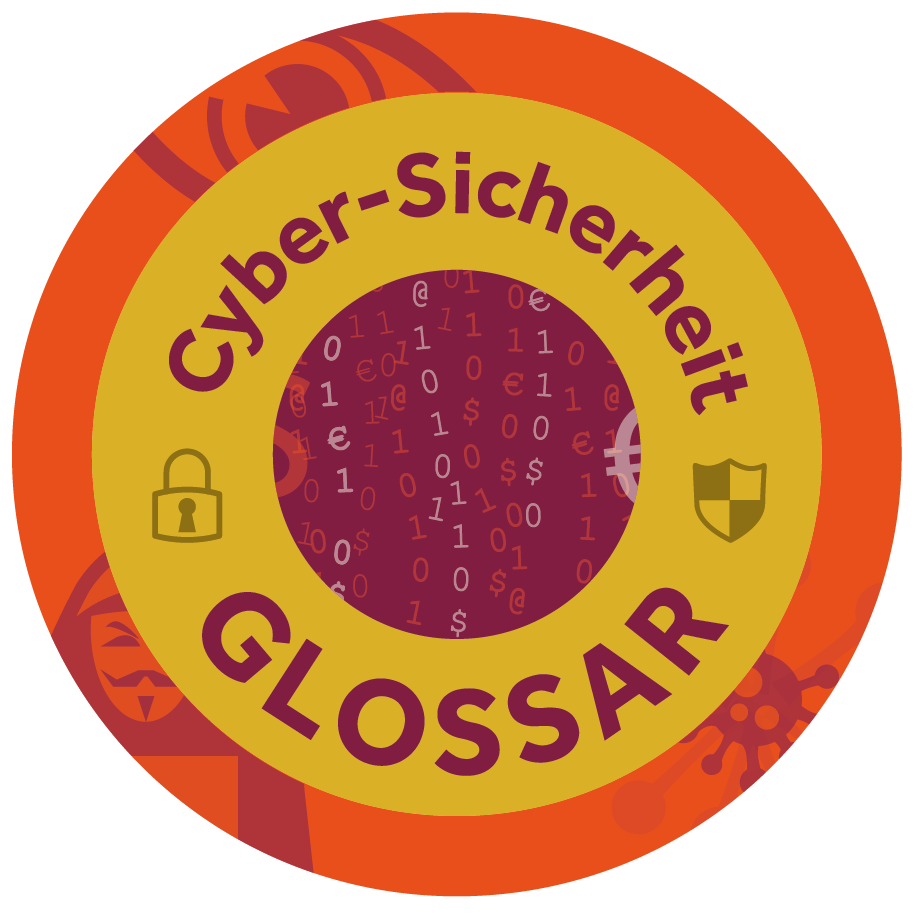N. Pohlmann, M. Sparenberg, I. Siromaschenko, K. Kilden:,
“Secure communication and digital sovereignty in Europe”.
In Proceedings of the ISSE 2014 – Securing Electronic Business Processes – Highlights of the Information Security Solutions Europe 2014 Conference,
Eds.: N. Pohlmann, H. Reimer, W. Schneider;
Springer Vieweg Verlag,
Wiesbaden 2014 Recent discussions about the weakening of Europe’s digital sovereignty have highlighted the fundamental importance of integrity and trustworthiness of Internet communication and services. This work introduces a scientific approach to simulate the effects of routing regulation concepts that limit data traffic to specific regions, which are supposed to be covered by a common data protection act. This concept was proposed as a potential countermeasure against the violation of European data protection and privacy policies by US intelligence services and other international governmental organizations. The objective is to analyze the current landscape of European Internet interconnections, illustrated by technical key figures and focusing on security implications of data traffic routing.
By simulating a virtual “Schengen Net”, where data routing between member states is limited to autonomous systems located in countries covered by the Schengen agreement, an estimation of resulting effects is presented, including technical, economical and security-related aspects.
Based on these analytical findings, the concept of routing restriction is matched against the alternative approach of data encryption to compare the fitness for purpose of both technical concepts for security improvements. The Internet from an infrastructure point of view
For a typical end user, it is hard to appreciate the complex infrastructure that we colloquially call “the Internet”. Behind that term lies a non-homogeneous, decentralized and geographically asymmetrical distributed network of managed sub-nets, called “autonomous systems” (AS). Being a network of networks, the Internet can be measured by its infrastructure components.
Key indicators of current Internet infrastructure:
• 50.000 autonomous systems worldwide, e.g. 1.500 in Germany, 15.000 in the USA
• 234 country signifiers
• 500.000 logical connections between AS
• 50% of all connections are attributed to G20 member states
• 50+% average rate of domestic connections
To gain further insights into the underlying structure, development and scale of the Internet, the Institute for Internet Security – if(is) has developed the Internet Key Figure System, an integrated monitoring and evaluation system of critical Internet infrastructure. The IKS enables us to generate and review a large number of key statistical information, including everything shown in the table above.
kostenlos downloaden | 




